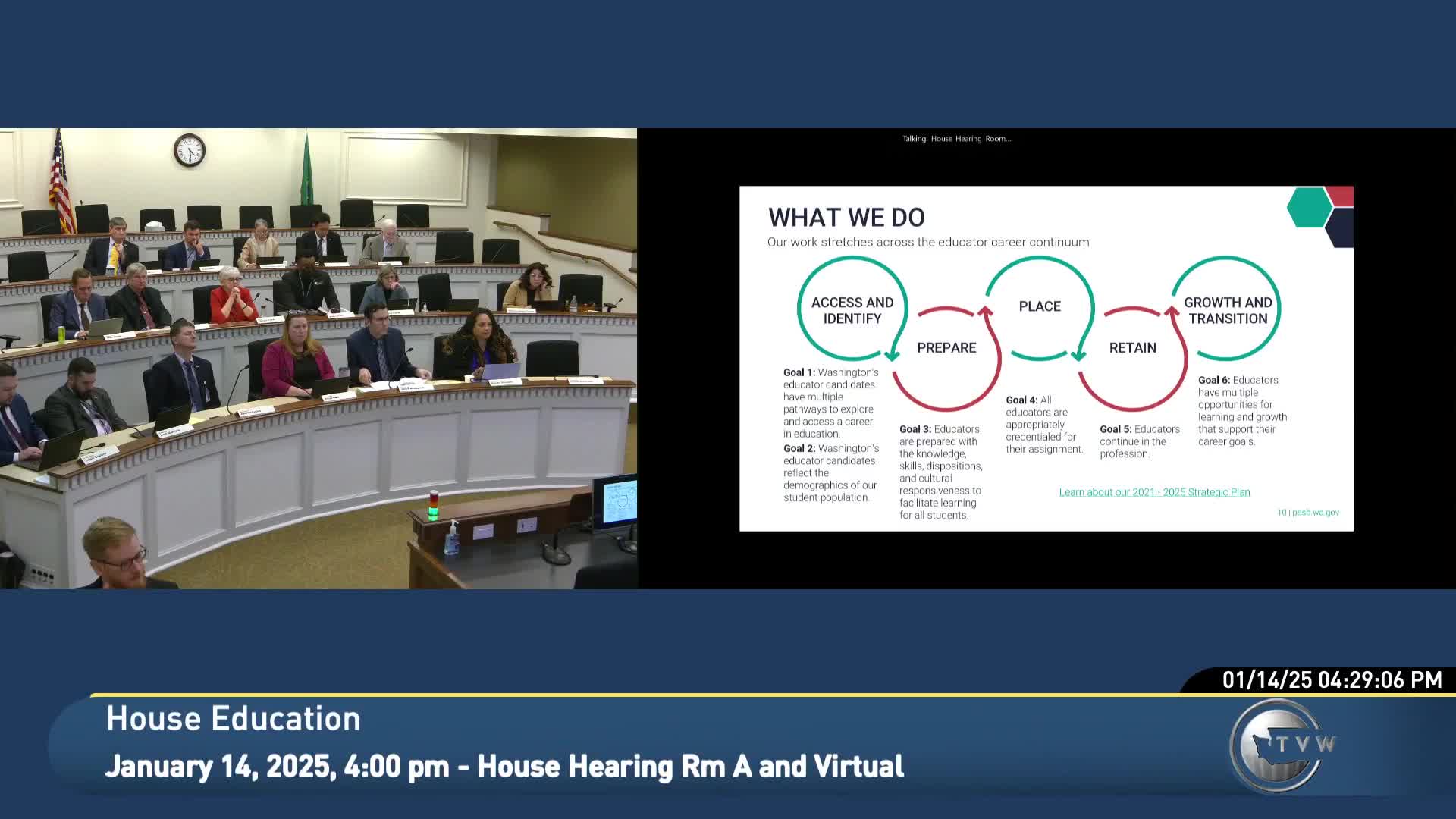JLARC: Precious-metals and monetized-bullion tax preferences grew but competitiveness effect is unclear
January 14, 2025 | Education, House of Representatives, Legislative Sessions, Washington
This article was created by AI summarizing key points discussed. AI makes mistakes, so for full details and context, please refer to the video of the full meeting. Please report any errors so we can fix them. Report an error »

The Joint Legislative Audit and Review Committee reported to the House Finance Committee that Washington’s business-and-occupation and sales-and-use tax preferences for precious metals and monetized bullion generated rising savings for beneficiaries but that the policy objective was not stated in statute and the preferences’ competitive effect is unclear.
JLARC staff said both preferences date to 1985, and the auditor inferred the original intent was to treat sales of precious metals similarly to other investment sales so Washington sellers would be competitive with out-of-state sellers. Between fiscal 2017 and 2023 reported savings rose from $5.1 million to $28.4 million (a 457% increase); JLARC estimated the two preferences together would save roughly $165 million over the next three biennia.
Why it matters: Growth in reported savings is consistent with higher spot prices for gold and silver and greater online sales activity; JLARC reported an increased share of savings claimed by out-of-state sellers (about 24% in 2017 to nearly 40% in 2023), which limits the policy’s ability to favor in-state sellers in remote sales after the U.S. Supreme Court’s South Dakota v. Wayfair decision.
Details and committee discussion
- The preferences remove certain precious metals and monetized bullion from the definition of retail sale for sales-and-use tax and exclude qualifying sales from retailing/wholesaling B&O tax activity.
- Reported savings: $5.1 million in 2017; $28.4 million in 2023; cumulative savings of about $111 million across the seven-year study window.
- JLARC’s recommendation: the legislature should decide whether to continue the preferences and, if so, add an explicit public-policy objective and establish performance metrics; if the goal is to preserve competitiveness, JLARC said lawmakers should consider different effects on in-person versus online sales.
Committee exchange
Representative Sharon Tomiko Santos asked about data sources for price changes; JLARC staff said price charts use publicly available spot prices and beneficiary-savings figures come from DOR return data reported by businesses. Representative Hunter Chase asked whether capital-gains treatment applies to appreciated precious metals in portfolios; JLARC staff said taxation depends on how an asset is held and that transactions in portfolios differ from physical holdings.
Ending
JLARC left the question of continuation to the legislature and urged adding a stated objective and metrics if preferences continue. No committee vote or formal action took place.
JLARC staff said both preferences date to 1985, and the auditor inferred the original intent was to treat sales of precious metals similarly to other investment sales so Washington sellers would be competitive with out-of-state sellers. Between fiscal 2017 and 2023 reported savings rose from $5.1 million to $28.4 million (a 457% increase); JLARC estimated the two preferences together would save roughly $165 million over the next three biennia.
Why it matters: Growth in reported savings is consistent with higher spot prices for gold and silver and greater online sales activity; JLARC reported an increased share of savings claimed by out-of-state sellers (about 24% in 2017 to nearly 40% in 2023), which limits the policy’s ability to favor in-state sellers in remote sales after the U.S. Supreme Court’s South Dakota v. Wayfair decision.
Details and committee discussion
- The preferences remove certain precious metals and monetized bullion from the definition of retail sale for sales-and-use tax and exclude qualifying sales from retailing/wholesaling B&O tax activity.
- Reported savings: $5.1 million in 2017; $28.4 million in 2023; cumulative savings of about $111 million across the seven-year study window.
- JLARC’s recommendation: the legislature should decide whether to continue the preferences and, if so, add an explicit public-policy objective and establish performance metrics; if the goal is to preserve competitiveness, JLARC said lawmakers should consider different effects on in-person versus online sales.
Committee exchange
Representative Sharon Tomiko Santos asked about data sources for price changes; JLARC staff said price charts use publicly available spot prices and beneficiary-savings figures come from DOR return data reported by businesses. Representative Hunter Chase asked whether capital-gains treatment applies to appreciated precious metals in portfolios; JLARC staff said taxation depends on how an asset is held and that transactions in portfolios differ from physical holdings.
Ending
JLARC left the question of continuation to the legislature and urged adding a stated objective and metrics if preferences continue. No committee vote or formal action took place.
View full meeting
This article is based on a recent meeting—watch the full video and explore the complete transcript for deeper insights into the discussion.
View full meeting
